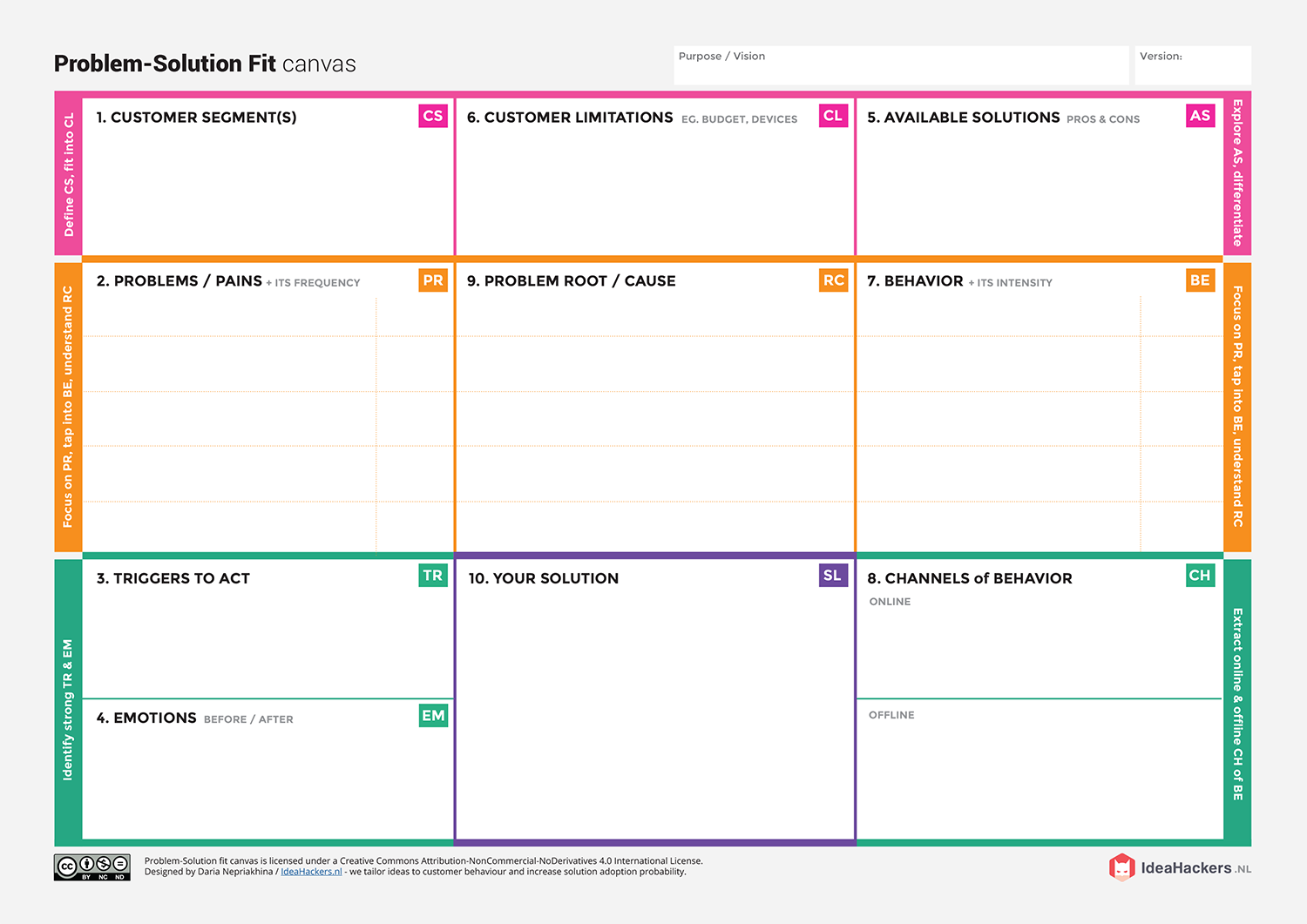10 insights of Problem-Solution Fit canvas
Here are 10 simple insights that emerged during my Lean Startup journey and research for the Problem-Solution Fit canvas:
1. When people spend time on something, they care about it.
When the problem is not supported by behaviour, it’s not a problem worth solving.
2. Small but frequent inconvenience turns into a significant pain in your customer’s eyes over time.
Frequently wasted time is painful. So, how often does a person experience an annoyance before it becomes preferable to pay for a solution and finally be done with it?
3. Complaints without actions and active public discussion mean nothing.
When people complain a lot about the subject, but there is no behaviour to support their claims, no attempt to solve it or educate themselves, then it’s not a problem worth solving.
4. When your potential customers suddenly start looking for a solution (intensified behaviour), there must have been a powerful trigger, which could be identified and could occur again.
Refer to triggers that are familiar to your customers in your visuals and marketing communication. At an early stage, it helps you to catch their attention, let them try your product, and over time shape what your brand should be.
5. Your customers will appreciate you identifying problems that make them freeze in indecision.
When the problem is big, solutions are costly, then people freeze rather than act or waste their time/money outsourcing the solution. They will therefore appreciate your help to understand the behavioural process and making them feel in control again.
6. Directly and indirectly related behaviour suggests possible angles to solving this problem by telling you which experiences and methods are already familiar to your customer.
Help people to adopt your product by designing it to fit in with what your customers already know, use, like, respect or have seen others use. When people consider trying a new product, they won’t appreciate being caught in an uncomfortable situation when they don’t know how to interact with it.
7. Suppose you are in doubt about which problem is worth solving. In that case, the problem scope is too broad to solve at once, then go for the most frequent annoyance that requires a significant effort (frequently invested time = regular behaviour).
A frequent problem means frequent interactions with customers. It helps you to build up trust and enables you to solve problems from the whole scope gradually.
8. Existing customer behaviour suggests which channels you should test online and offline, and which channels should you use for customer development.
For example, chefs and sous chefs use a specific app to communicate with each other about their work. They also are part of specific Facebook groups that share kitchen-related humourous posts. Both channels relate to their work; both are great to reach this group for interviews or more.
9. It’s usually the same done differently, or the new done in a familiar way.
Channels of behaviour and mediums change over time. Existing methods become outdated. People, therefore, continually looking for different, better ways to do the same things, communicated better. On the other hand, progress pushes people to try new things. To increase adoption product should look approachable, tangible and a bit familiar.
10. Think in scenarios from a customer perspective.
A trigger raises problem awareness, which in turn causes specific behaviour (what do people do about it?), which results in an outcome (how people feel about it and solving it like that?). It would be best if you know what potential customers currently get in comparison to what they could get with your product or service.
We hope that this helps you to get started, you can download and try Problem-Solution fit canvas here. If you have any questions, feedback, ideas or thoughts to discuss - book a call with us.


